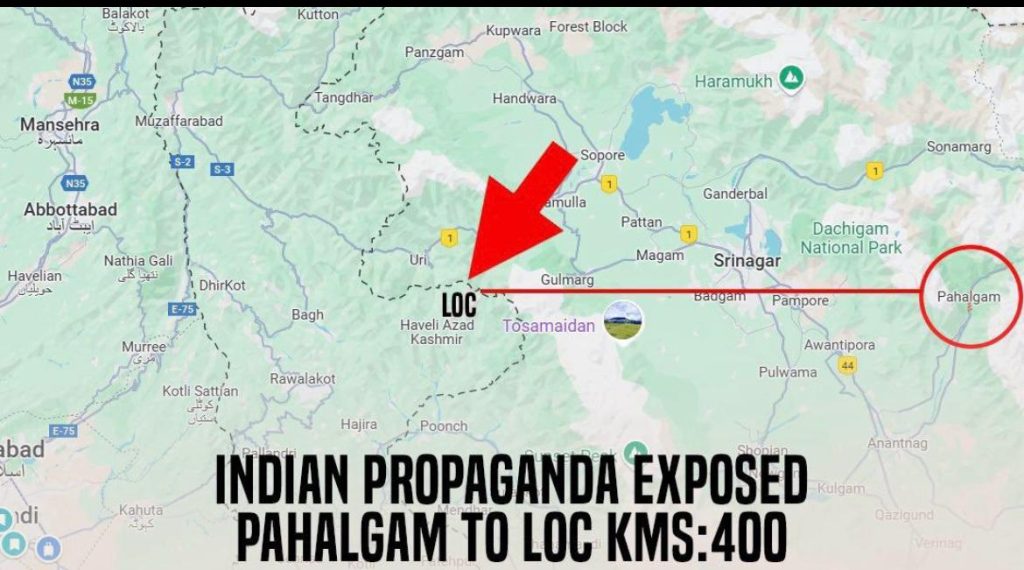Historically, Indian officials and media have often attributed such incidents to Pakistan albeit LeT, but these allegations lack credible support. The logistical challenges of operating so deep within IIOJ&K, especially through multiple layers of security enforced by over 700,000 personnel, raise doubts about the feasibility of such an operation by LeT. Furthermore, LeT’s operational focus has typically been directed at military targets—not civilians—aligning with their stated objective of “winning hearts and minds” of the Kashmiri population. The group’s past involvement in humanitarian efforts, such as during the 2005 earthquake, further weakens the narrative of its involvement in attacks targeting innocent tourists.
During the visits to India of so many American presidents, India has a set pattern of attributing proven false flag terror incidents or igniting riots against the Muslims and putting blame on Pakistan or Pakistan-based groups. This has occurred despite well-documented evidence of Indian intelligence agencies orchestrating or facilitating acts of terrorism both within and outside of India. Examples include the year 2000 Chittisinghpura massacre of Sikhs during President Clinton’s visit, Pulwama incident of February 2019 which preceded Indian general elections , Muslims massacre in Delhi riots during the visit of President Donald Trump in February 2020, Haryana genocide of Muslims where the Imam of a Mosque was thrown into burning fire just few weeks before the visit of President Joe Biden in September 2023 and now Pahalgam killings 400 KM’s away from the LOC of tourists during the ongoing visit of the Vice President JD Vance. Even prominent Indian figures—including Rajiv Gandhi, former governor and military officers—have pointed to internal orchestration in several such terrorist attacks .
( https://tribune.com.pk/story/1919095/reality-pulwama-incident )
Let us now turn to the specifics of the Pahalgam incident. The attack occurred at 3 PM on 22nd April 2025, in broad daylight, in the presence of over 2,000 tourists—yet there was reportedly no security coverage by India’s massive security apparatus. A grave failure of the intelligence if it was manifested by external elements ?The attackers supposedly approached the site, carried out the act, and escaped without resistance. Strangely, within minutes, Indian social media accounts linked to RAW began blaming Pakistan. Even more unusual, despite reports of 26 deaths and over 20 injuries, there were no visible bloodstains, bullet marks, or credible video evidence from the scene or from hospitals.
Adding to the skepticism, Indian media narratives aligned perfectly with the Hindutva ideology promoted by Prime Minister Modi and the RSS, suggesting that the terrorists specifically targeted Hindus after verifying their religion. Such a detailed and deliberate segregation in the midst of a terror attack seems implausible, unless the attackers were extraordinarily confident of facing no resistance. This feeds into a broader pattern of communal polarization, evidenced by other government actions—from the Babri Mosque case and triple talaq law, to the controversial’ Waqf ‘Bill and demolition of religious sites.
Pakistan, as a state policy and in line with international norms and UN resolutions, has always condemned terrorism in all its manifestations and forms .It has suffered immensely from terrorism over the past four decades and cannot be simplistically portrayed as a perpetrator. The arrest of RAW operatives like Kulbhushan Jadhav, and Indian links to the Army Public School attack in Peshawar (2014) and the recent deadly attack on Jaffer Express, underscore the complex dynamics of regional terrorism. In its fight against terrorism,Pakistan has lost nearly hundred thousand lives and over $115 billion to this scourge, while consistently .continuing to combat it.
There is compelling circumstantial evidence suggesting that the Pahalgam attack was staged to serve political ends. It came shortly after several geopolitical developments unfavorable to India e.g., warming ties between Pakistan and Afghanistan and Bangladesh, President Trump’s outreach to Islamabad, international interests in rare earth materials and minerals in Pakistan etc. Moreover, there was a history of India blaming Pakistan in any act of terrorism inside their territory, despite the involvement of Indian intelligence agencies in most acts of terrorism not only inside Pakistan, but also against Sikhs in Canada, USA and UK. All these past historical facts point the finger directly towards Indian mischief in Pahalgam false flag incident, so much deep inside in the IIOJ&K.
A grey area that merits attention is the potential involvement of IS-Khorasan (IS-K), reportedly a proxy of Indian intelligence in IIOJ&K. IS-K has perpetrated various acts of terrorism in the Valley and has links to breakaway factions of Tehreek-i-Taliban Pakistan (TTP). Their activities, supported by Indian agencies, are documented, and their timing aligns with recent signs of rapprochement between Pakistan and Afghanistan.
Given the nuclear capabilities of both India and Pakistan, restraint and clarity are essential in the aftermath of incidents like Pahalgam. India, in particular, must refrain from assigning blame in the absence of concrete evidence and clamoring for a kinetic response to eliminate Pakistan or block all flow of water down stream etc. Rash media narratives not only destabilize regional peace but also erode credibility.
Following the Jaffer Express attack, Indian media CELEBRATED what was a tragedy involving the death of innocent civilians. In contrast, Pakistan’s Foreign Office expressed concern at the loss of tourist’s lives in an attack in Anantnag district of IIOJ&K and extended condolences to the near and dear ones of the deceased and wished the injured a speedy recover. Further, the Pakistani media expressed sympathy for the victims of the Pahalgam attack and showed restraint. This contrast highlights the need for responsible journalism and mature statecraft on both sides.
Ultimately, peace between India and Pakistan is imperative—not just to avoid conflict, but to lift millions of populace out of poverty and deprivation. This can only be achieved through direct dialogue and mutual trust.
I had the privilege of attending bilateral dialogue between President Musharraf and two visionary Indian leaders—PM, Atal Bihari Vajpayee and Dr. Manmohan Singh—who genuinely sought lasting peace between the two neighbors.
One can only hope that their legacies are revived.
The writer can be reached at [email protected]

